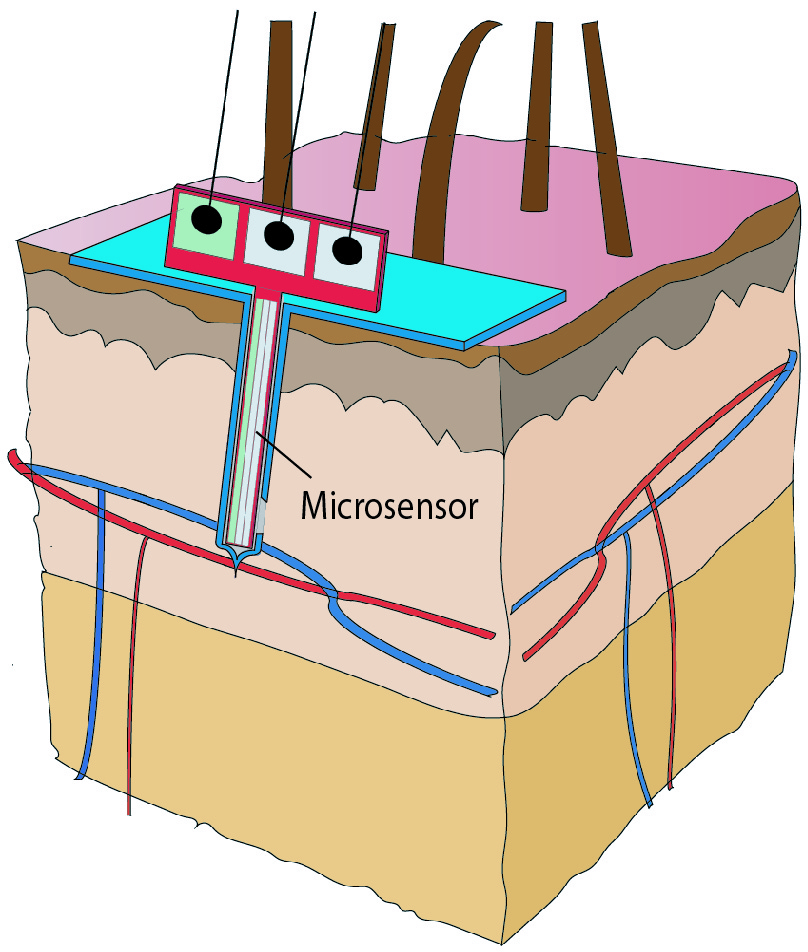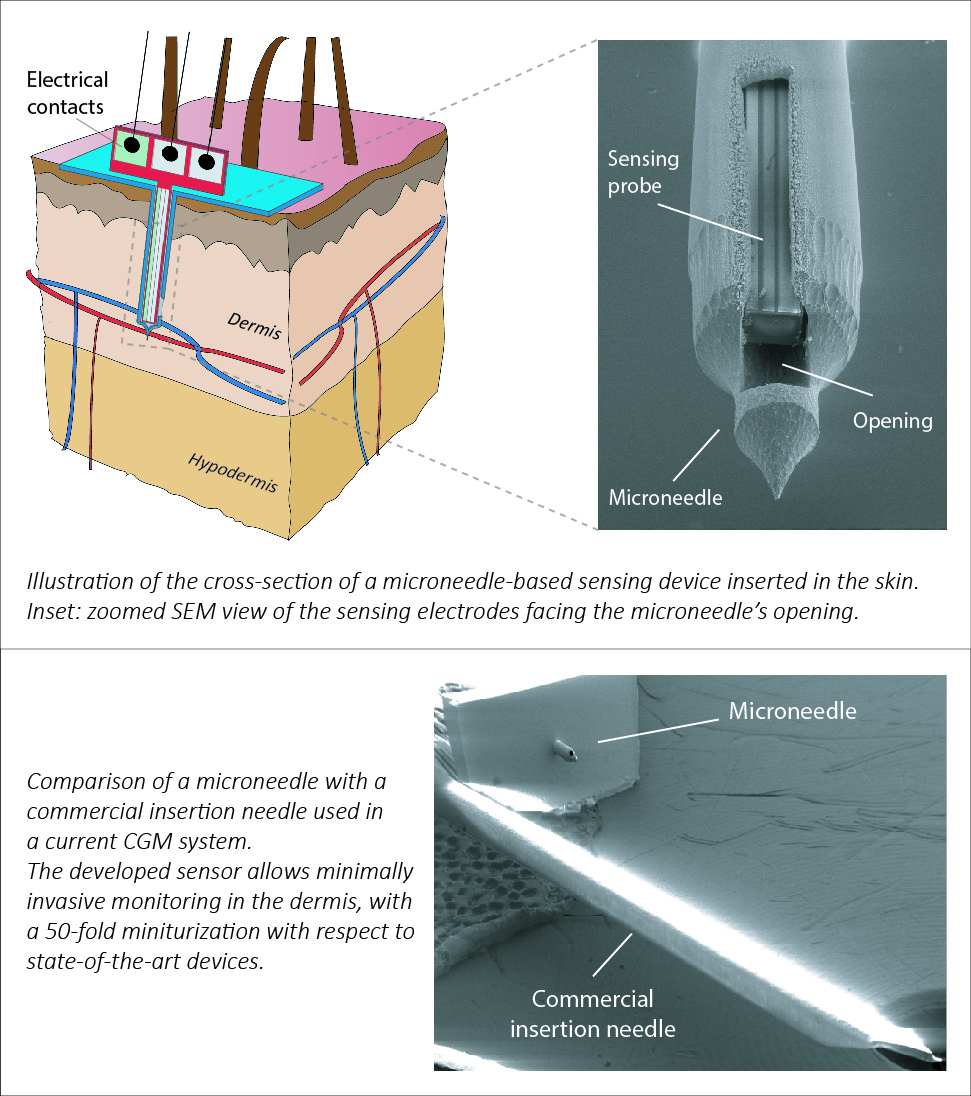Gluco-Touch
The Need
Diabetes mellitus affects 400 million people worldwide, and is responsible for approximatively 5 million deaths per year. Although diabetes is not curable, proper diabetes management is essential to avoid numerous possible complications, both on a short and a long term, such as hypoglycemia, cardiovascular diseases, neuropathy, retinal damage, nephropathy and amputations. Moreover, 10% of healthcare expenses are currently related to diabetes.
 Our approach
Our approach
We use microfabrication technologies to realize sensing microprobes thinner than a human hair, and shorter than 1 mm. The designed sensor thus fits in the dermal region of the skin, ideal location to track glucose levels, with minimal delay with respect to glycaemia oscillations and without causing pain during insertion. The developed technology has been demonstrated in relevant working conditions (i.e. in-vitro testing at modeled skin conditions). Currently, our work is focused on demonstrating correct operation of a prototype in-vivo.
The benefits
The advantages are in terms of convenience (reduced pain), and thus improved quality of life, and possibly in terms of monitoring quality, and thus health. Moreover, the relevance is in particular related to the amount of people that are affected by diabetes, and by the life-long need of self-monitoring of affected patients. Our approach is an almost natural evolution of current CGM systems: continuous monitoring with both a minimally invasive and painless insertion procedure, and a better measurement location for faster glycaemia tracking.
Competitors
Several competing products are already on the market, by companies like La Roche, Abbott, Medtronic and Dexcom. Even though implantable continuous glucose monitoring (CGM) systems have tremendously developed in the last decade, they and are not as reliable as conventional blood stick methods and are still relatively large (5 mm insertion depth), making them quite invasive, especially during the needle-based insertion procedure. Moreover, because of their large size, they measure in the hypodermis, which is not the ideal measurement location for fast and reliable glycaemia tracking.
The traditional alternative to CGM is blood monitoring via finger pricks, typically measured 4 to 5 times a day. This approach is very painful, stressful, exposes to infection risks, and especially does not provide a temporal picture of the glucose concentration evolution throughout the day.

Publications on Gluco-Touch:
- Ultra-miniaturization of a planar amperometric sensor targeting continuous intradermal glucose monitoring
- Microneedle-based system for minimally invasive continuous monitoring of glucose in the dermal interstitial fluid
Divulgation articles on our work:
-
A new glucose monitor for diabetics proves virtually painless and even more accurate
-
A new glucose monitor for diabetics proves virtually painless
-
Researchers design a more comfortable, reliable glucose monitor for people with diabetes
(in Swedish)